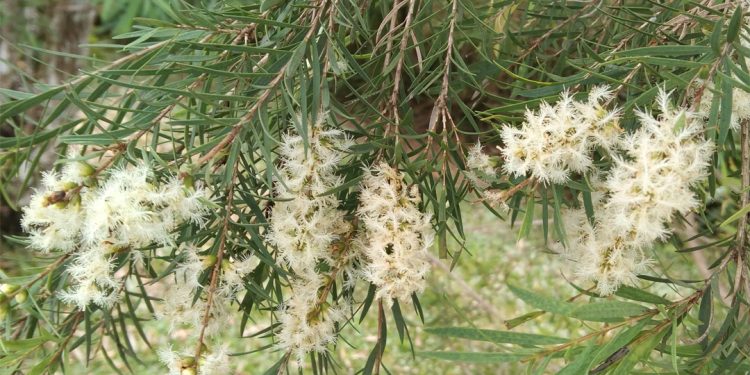Melaleucas are half-hardy to tender evergreen trees, 15-40 m (50-130 ft.), with thin, peeling, corky bark, narrow, pointed, leathery leaves and bottle-brush-shaped flowers.
History and traditions
Tea-tree was named by Captain Cook’s crew when, following local custom, they drank it as a tea substitute. The Australian Aborigines used it medicinally and in World War II tea tree oil, distilled from M. alternifolia, was used in Australia as a powerful germicide. It has since gained ground in herbal medicine for its remarkable healing properties.
Growth
Alternifolia is half-hardy, M. leuca-dendron is tender. Grow in moisture-retentive to wet soil, in full sun. They must be grown as conservatory plants in cool, temperate regions. Propagated by seed or by semi-ripe cuttings.
Uses
Medicinal
Strongly antiseptic, anti-bacterial and antifungal, tea-tree oil is used diluted in a carrier oil and applied externally for healing cuts, burns, stings, insect bites, acne, and athlete’s foot. It is also said to be effective against warts, verruca’s and head lice eggs when used undiluted.
General
A constituent of many pharmaceutical and cosmetic industry products.










